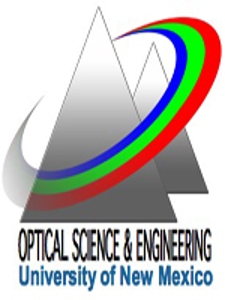OSE Seminar by Cristina Rodriguez on Next-generation optical imaging methods for probing the nervous system
Departmental News

Posted: February 14, 2020
Date: Thursday, February 20, 2020
Time: 11:30 AM to 12:30 PM
Location: PAIS, Room 2540
Map to PAIS:
ADA Accommodations are available. Please contact Doris Williams at dorisw@chtm.unm.edu.
Speaker:
Cristina Rodríguez
University of California, Berkeley
Abstract:
Optical microscopy has allowed the discovery of physical structures and phenomena otherwise invisible or unresolvable to our bare eyes. In particular, nonlinear optical microscopy has revolutionized our ability to image inside scattering biological tissues. Inhomogeneities in the refractive index of tissue components (e.g., water, lipids, proteins), however, introduce wavefront aberrations, which compromise the image signal and resolution. These aberrations ultimately limit the imaging depth – and hold back our understanding of many biological processes that take place within living organisms. We thus need next-generation optical tools for imaging biological tissues at depth. During her postdoc, Cristina has been working on exactly that. Through her fascination for optics, she has combined three-photon microscopy, adaptive optics, and volumetric imaging using Bessel beams, to push the boundaries of imaging depth, resolution, and speed. Cristina uses these novel optical technologies to investigate her big passion: the nervous system. She will present on the insights (literally) she has gained into the brain.
Biography:
Cristina began her research career as an undergraduate student in Physics in her home country, Venezuela. She obtained her PhD in Physics at the University of New Mexico (under the supervision of Professor Wolfgang Rudolph), where her research concentrated on experimental and theoretical studies of nonlinear optical microscopy. In particular, she used third-harmonic generation microscopy for studying femtosecond laser-induced plasmas and dielectric thin film coatings. For her favorite project, she co-invented a frequency tripling mirror – an optimized structure for efficiently tripling the frequency of laser light. Driven by her passion for understanding the brain and its inner workings, Cristina joined the group of Professor Na Ji as a postdoctoral scholar at the Janelia Research Campus of the Howard Hughes Medical Institute. Here, she used her background in nonlinear optics to build the next-generation of microscopes to understand how the brain works, pushing the boundaries on imaging depth, resolution, and speed. When Professor Na Ji relocated her group to the University of California, Berkeley, Cristina followed the lab, where she continues to develop and apply optical tools that allow us to explore life deep within biological tissues. Cristina has co-authored papers in topics ranging from astrophysics and material science, to neurobiology.
